October 9th, 2009 by Kevin Lindstrom | No Comments »
Good news regarding the UBC Library’s CISTI Orders Document Delivery Service. You no longer need to come to the Library to pick up your CISTI or Interlibrary Loan request.
For CISTI Orders articles, Interlibrary Loan staff are creating brief records in Relais (our ILL/DD software) in order to post the articles to the web and to send an email to the user. The article can be accessed a total of 3 times within 15 days from the date of the email message. After either accessing the article 3 times or 15 days have passed, the article is no longer available to the user.
Articles ordered from Interlibrary Loan are now being delivered to UBC users via post to web. When an article is received, Interlibrary Loan staff match the article to the correct request and then it is posted to the web. The user receives an email message with a link to the article. The user then clicks on the link to obtain the article. The user does not need a password to access their articles.
All articles received by 5:00PM Monday to Friday will be processed that day.
Under the Copyright Act, if the user wants to keep a copy of the article, they must print a copy. The article has been received for the purposoe of research or private study only. It is not for redistribution, retransmission or electronic storage. It cannot be used for any other purpose or reproduced without permission of the copyright owner.
Submitted by Kevin Lindstrom Science and Engineering Liaison Librarian
Posted in Earth and Ocean Sciences, General Science, Geography, Main, Materials Engineering, Mathematics, Mechanical Engineering, Mining engineering, News, Physics, Science - undegraduate classes, Statistics, Teaching, Uncategorized, Wood Sciences | No Comments »
October 7th, 2009 by Eugene Barsky | No Comments »
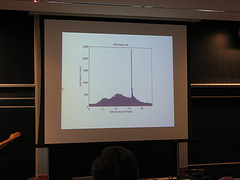
A new article today in the Journal of the American Society for Information Science could be of interest to those of you who post their studies to arxiv.org:
A. Haque and P. Ginsparg, “Positional effects on citation and readership in arXiv,” J. Am. Soc. Inf. Sci. Technol., vol. 60, pp. 2203-2218, 2009.
Abstract:
arXiv.org mediates contact with the literature for entire scholarly communities, providing both archival access and daily email and web announcements of new materials. We confirm and extend a surprising correlation between article position in these initial announcements and later citation impact, due primarily to intentional  self-promotion
self-promotion by authors. There is, however, also a pure
by authors. There is, however, also a pure  visibility
visibility effect: the subset of articles accidentally in early positions fared measurably better in the long-term citation record. Articles in astrophysics (astro-ph) and two large subcommunities of theoretical high energy physics (hep-th and hep-ph) announced in position 1, for example, respectively received median numbers of citations 83%, 50%, and 100% higher than those lower down, while the subsets there accidentally had 44%, 38%, and 71% visibility boosts. We also consider the positional effects on early readership. The median numbers of early full text downloads for astro-ph, hep-th, and hep-ph articles announced in position 1 were 82%, 61%, and 58% higher than for lower positions, respectively, and those there accidentally had medians visibility-boosted by 53%, 44%, and 46%. Finally, we correlate a variety of readership features with long-term citations, using machine learning methods, and conclude with some observations on impact metrics and the dangers of recommender mechanisms.
effect: the subset of articles accidentally in early positions fared measurably better in the long-term citation record. Articles in astrophysics (astro-ph) and two large subcommunities of theoretical high energy physics (hep-th and hep-ph) announced in position 1, for example, respectively received median numbers of citations 83%, 50%, and 100% higher than those lower down, while the subsets there accidentally had 44%, 38%, and 71% visibility boosts. We also consider the positional effects on early readership. The median numbers of early full text downloads for astro-ph, hep-th, and hep-ph articles announced in position 1 were 82%, 61%, and 58% higher than for lower positions, respectively, and those there accidentally had medians visibility-boosted by 53%, 44%, and 46%. Finally, we correlate a variety of readership features with long-term citations, using machine learning methods, and conclude with some observations on impact metrics and the dangers of recommender mechanisms.
** Photo by http://www.flickr.com/photos/easternblot/ – “Paul Ginsparg shows that everyone submits their paper to ArXiv *just* after the submission deadline so they’ll be the first on the front page the next day”
Posted in Astronomy, Atmospheric Science, Chemical and Biological Engineering, Chemistry, Civil Engineering, Earth and Ocean Sciences, General Science, Geography, Main, Materials Engineering, Mathematics, Mechanical Engineering, Mining engineering, Physics, Science - undegraduate classes, Statistics, Uncategorized | No Comments »
October 1st, 2009 by Eugene Barsky | No Comments »
Those of us, who teach or use Google or Google Scholar (GS) might find the most recent Peter Jacso’s piece on Google Scholar to be of interest – http://www.libraryjournal.com/article/CA6698580.html?&rid=1105906703&source=title
Please be very careful using this tool. We talk about the perils of GS and compare it with Compendex and Web of Science in our Google workshops.
We ourselves saw those problems almost five years ago, and they are still not corrected:
Giustini D, & Barsky E. A look at Google Scholar, PubMed and Scirus: comparisons and recommendations . J Can Health Libr Assoc 2005, 26(3): 85-89.
Posted in Astronomy, Atmospheric Science, Chemical and Biological Engineering, Chemistry, Civil Engineering, Earth and Ocean Sciences, General Science, Geography, Main, Materials Engineering, Mathematics, Mechanical Engineering, Mining engineering, Physics, Science - undegraduate classes, Statistics, Teaching, Wood Sciences | No Comments »
September 25th, 2009 by Kevin Lindstrom | No Comments »
This week’s issue of Science focuses in CO2 capture and storage.
Articles include
Why Capture CO2 from the Atmosphere?
Round and Round: A Guide to the Carbon Cycle
Onshore Geologic Storage of CO2
Submitted by Kevin Lindstrom Liaison Librarian for Earth and Ocean Sciences
Posted in Atmospheric Science, Chemical and Biological Engineering, Chemistry, Civil Engineering, Earth and Ocean Sciences, General Science, Geography, Mining engineering, Science - undegraduate classes, Uncategorized | No Comments »
September 16th, 2009 by Eugene Barsky | No Comments »
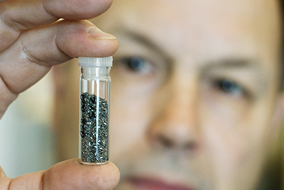
Scott Dunbar is an associate professor in the Norman B. Keevil Institute of Mining Engineering at the University of British Columbia. His recent work on biomining was highlighted in UBC Reports a few months ago – “The virus that binds: A novel idea marries biology and mining”
You can see much of the biomining research in the Web of Science database (for UBC folks, here is the direct link to the appropriate search )
** photo by Martin Dee
Posted in Chemical and Biological Engineering, Chemistry, Earth and Ocean Sciences, General Science, Main, Materials Engineering, Mining engineering, Science - undegraduate classes | No Comments »
August 18th, 2009 by Eugene Barsky | No Comments »
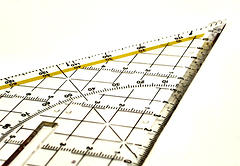
All IMS articles 2004 and forward are freely available in a postprint format on arXiv <http://arxiv.org/>, as well as those articles posted by authors.
From the IMS website: http://www.imstat.org/publications/arxiv.html
ArXiv is an open access, fully automated electronic archive and distribution server for research articles, now owned and operated by Cornell University, and partially funded by NSF. The main fields it covers are physics, mathematics, non-linear science, computer science, and quantitative biology. Recently, arXiv has cooperated with IMS and the Bernoulli Society to open up a new statistics category within mathematics. We expect this category to eventually grow into a top level archive comparable to e.g. mathematics and physics.
Great news, IMS!
** photo by http://www.flickr.com/photos/saz/
Posted in Main, Mathematics, News, Science - undegraduate classes, Statistics | No Comments »
August 5th, 2009 by Eugene Barsky | No Comments »
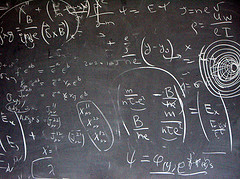
The International Mathematical Union is offering videos that were recorded at the International Congresses of Mathematicians in 1998, 2002, and 2006. IMU maintains the copyright of the videos but gives everyone interested the permission to download and show the videos.
http://www.mathunion.org/activities/icm/videos
** photo by http://www.flickr.com/photos/mscolly/
Posted in Main, Mathematics, Science - undegraduate classes | No Comments »
July 8th, 2009 by Eugene Barsky | No Comments »
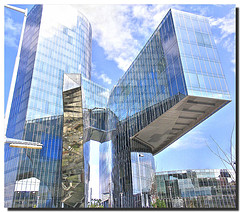
Yesterday’s article in NYT fascinated me with its title – “As Unbreakable as … Glass?”
There is lots of research in this area that you can find in Web of Science database, Compendex database, and of course in the standard-bearer for anything chemical – SciFinder Scholar database.
We also own hundreds of books on this topic. Here is the short list for Glass.
** photo by smb
Posted in Amusing stuff, Chemical and Biological Engineering, Chemistry, Civil Engineering, Main, Materials Engineering, Science - undegraduate classes | No Comments »
July 3rd, 2009 by Eugene Barsky | No Comments »
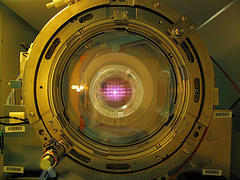
A very recent article on PLoS One is worth the read –
Bollen J, Van de Sompel H, Hagberg A, Chute R, 2009 A Principal Component Analysis of 39 Scientific Impact Measures. PLoS ONE 4(6): e6022. doi:10.1371/journal.pone.0006022
Abstract:
Background
The impact of scientific publications has traditionally been expressed in terms of citation counts. However, scientific activity has moved online over the past decade. To better capture scientific impact in the digital era, a variety of new impact measures has been proposed on the basis of social network analysis and usage log data. Here we investigate how these new measures relate to each other, and how accurately and completely they express scientific impact.
Methodology
We performed a principal component analysis of the rankings produced by 39 existing and proposed measures of scholarly impact that were calculated on the basis of both citation and usage log data.
Conclusions
Our results indicate that the notion of scientific impact is a multi-dimensional construct that can not be adequately measured by any single indicator, although some measures are more suitable than others. The commonly used citation Impact Factor is not positioned at the core of this construct, but at its periphery, and should thus be used with caution.
Frankly, I was surprised by the authors’ conclusion, particularly with this piece: “Our results indicate that the JIF and SJR express a rather particular aspect of scientific impact that may not be at the core of the notion of scientific “impact”. Usage-based measures such as Usage Closeness centrality may in fact be better “consensus” measures.”
I am used to be inquired about Journal Impact Factor (JIF) so often in academia and know that it used for tenure consideration in many departments in UBC.
** photo by testone 22
Posted in Astronomy, Atmospheric Science, Chemical and Biological Engineering, Chemistry, Civil Engineering, Earth and Ocean Sciences, General Science, Geography, Main, Materials Engineering, Mathematics, Mechanical Engineering, Physics, Podcasts, Science - undegraduate classes, Statistics, Wood Sciences | No Comments »

 self-promotion
self-promotion by authors. There is, however, also a pure
by authors. There is, however, also a pure 





